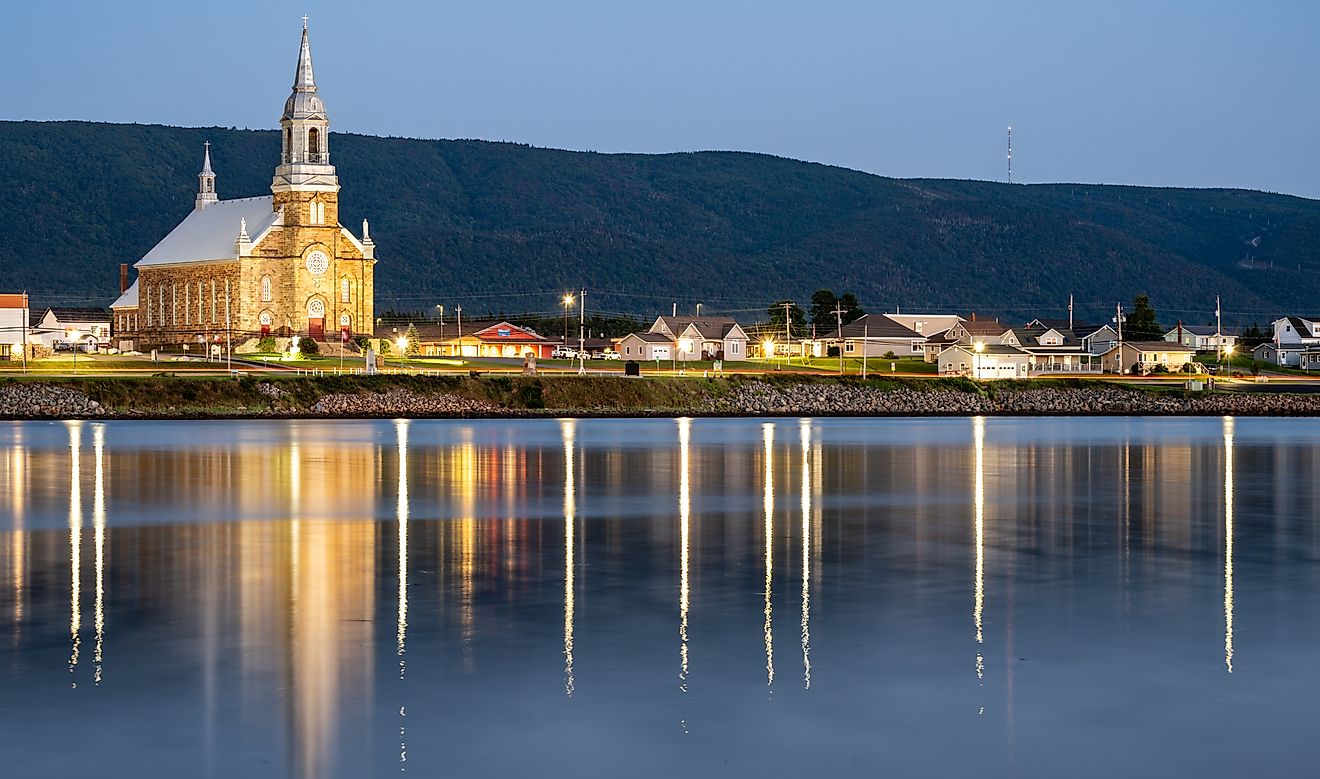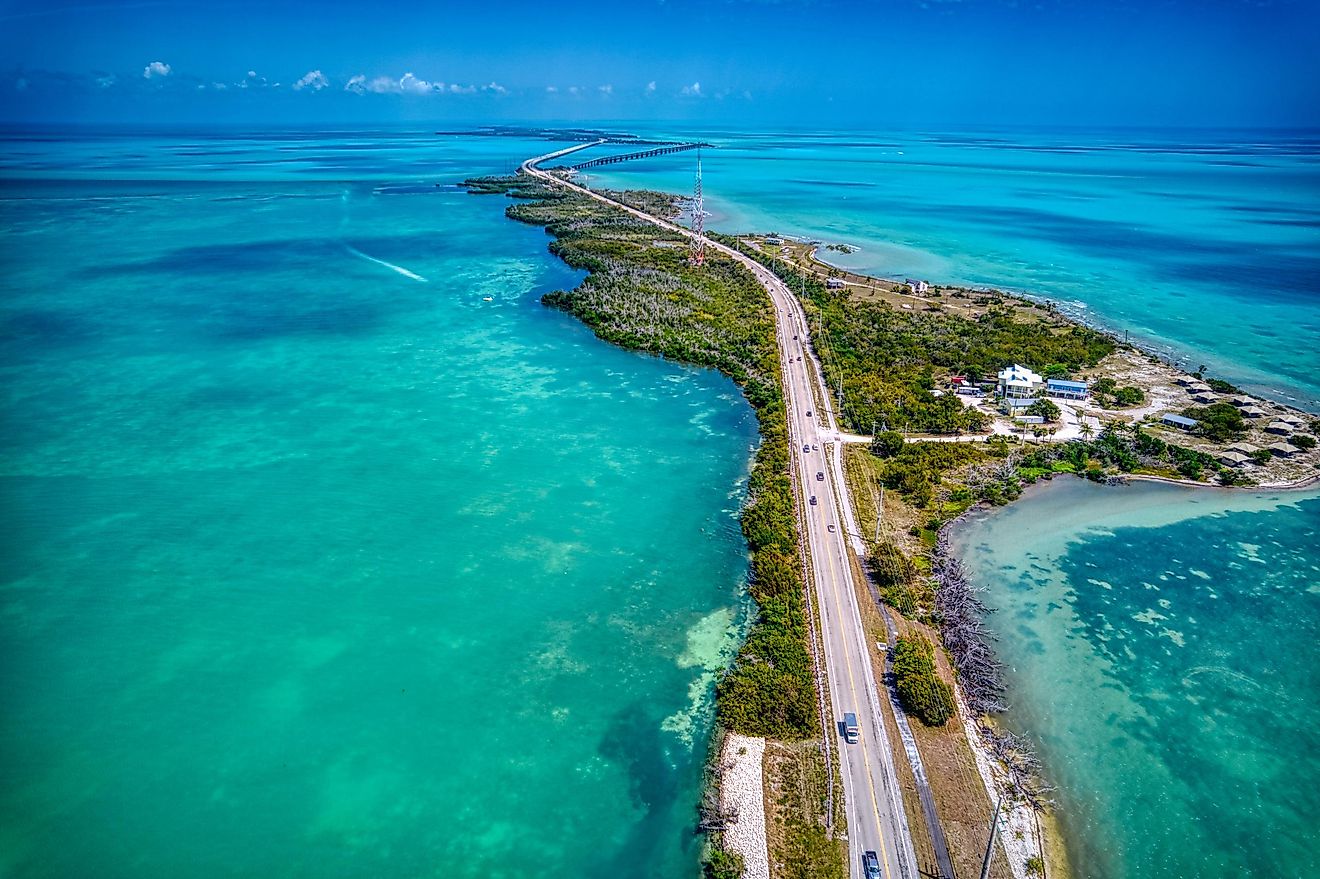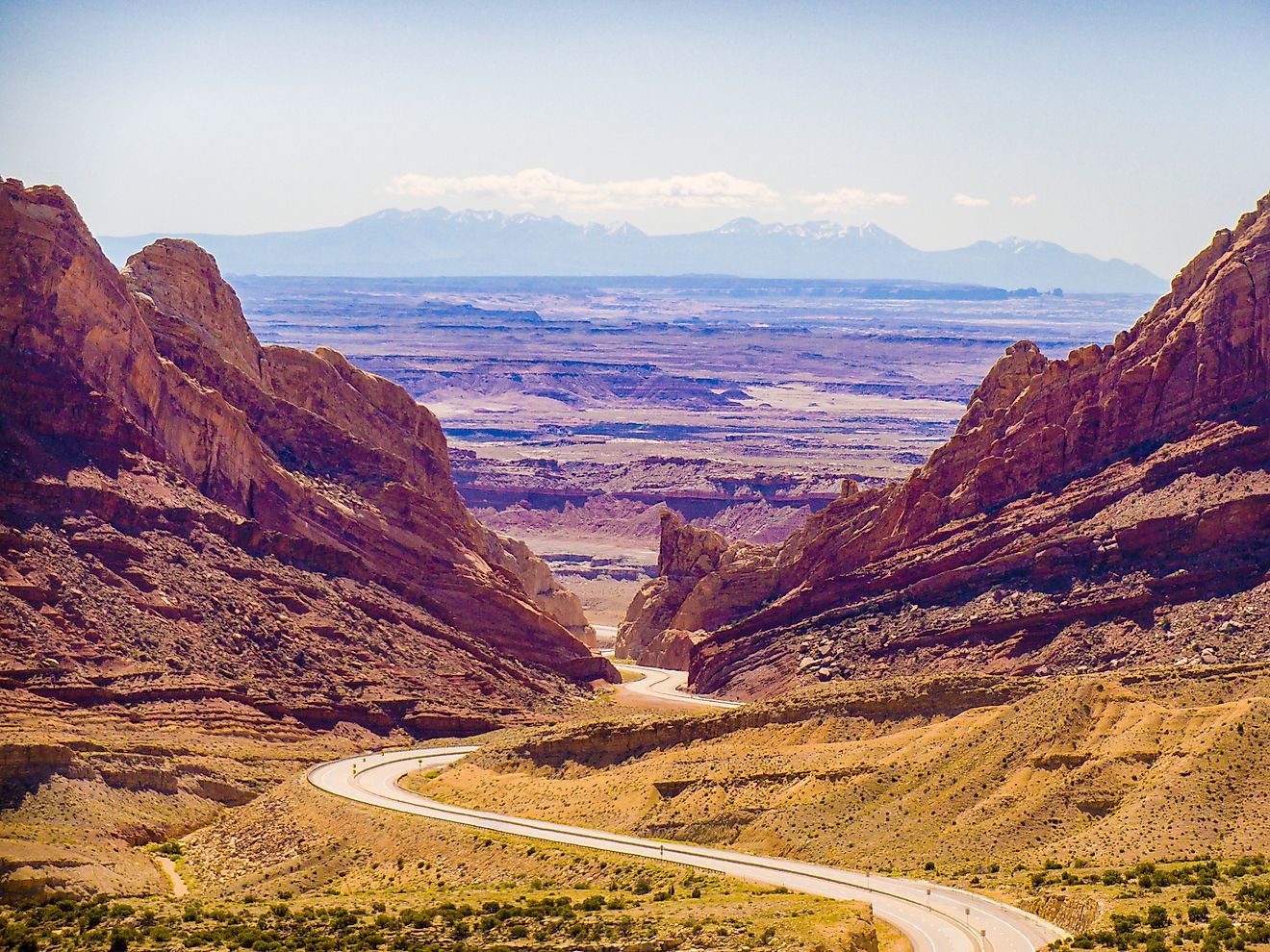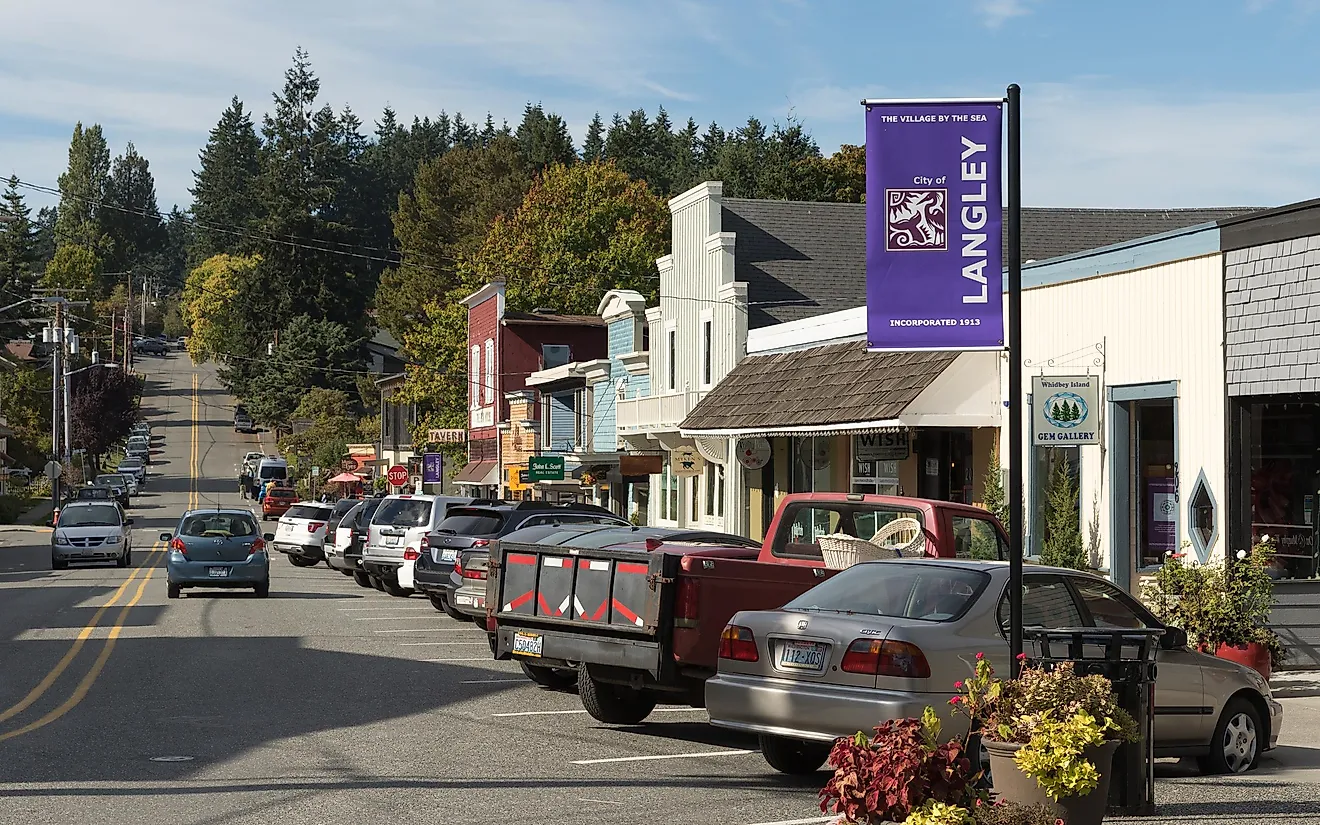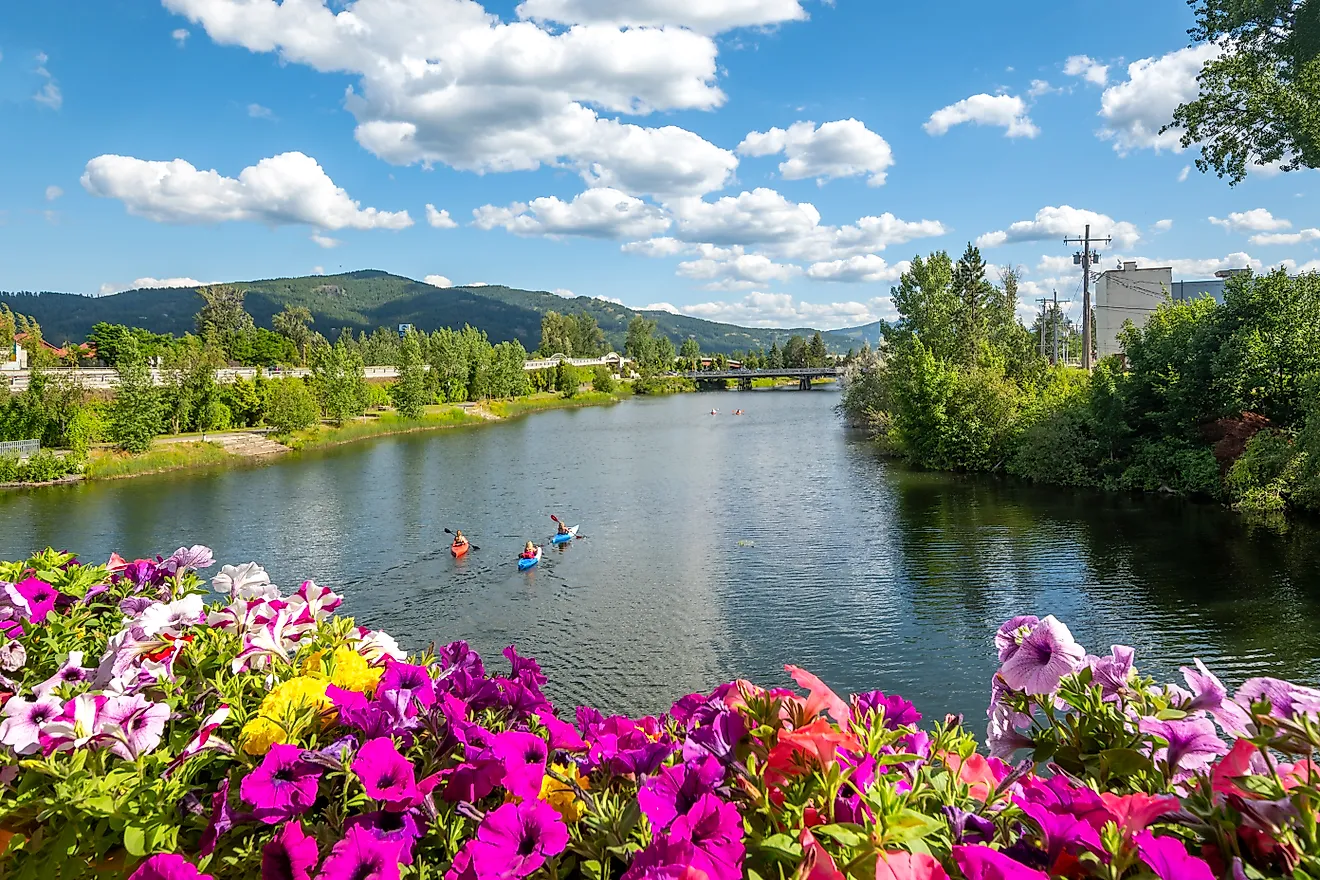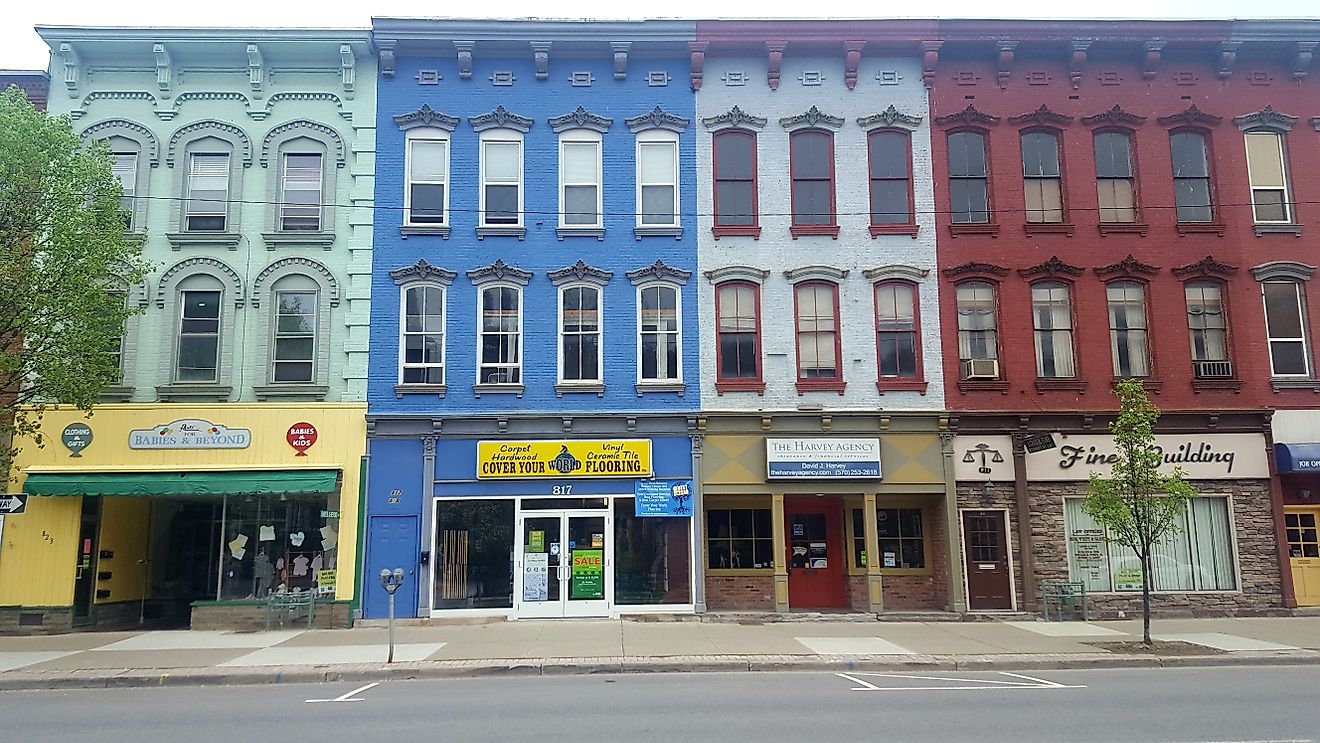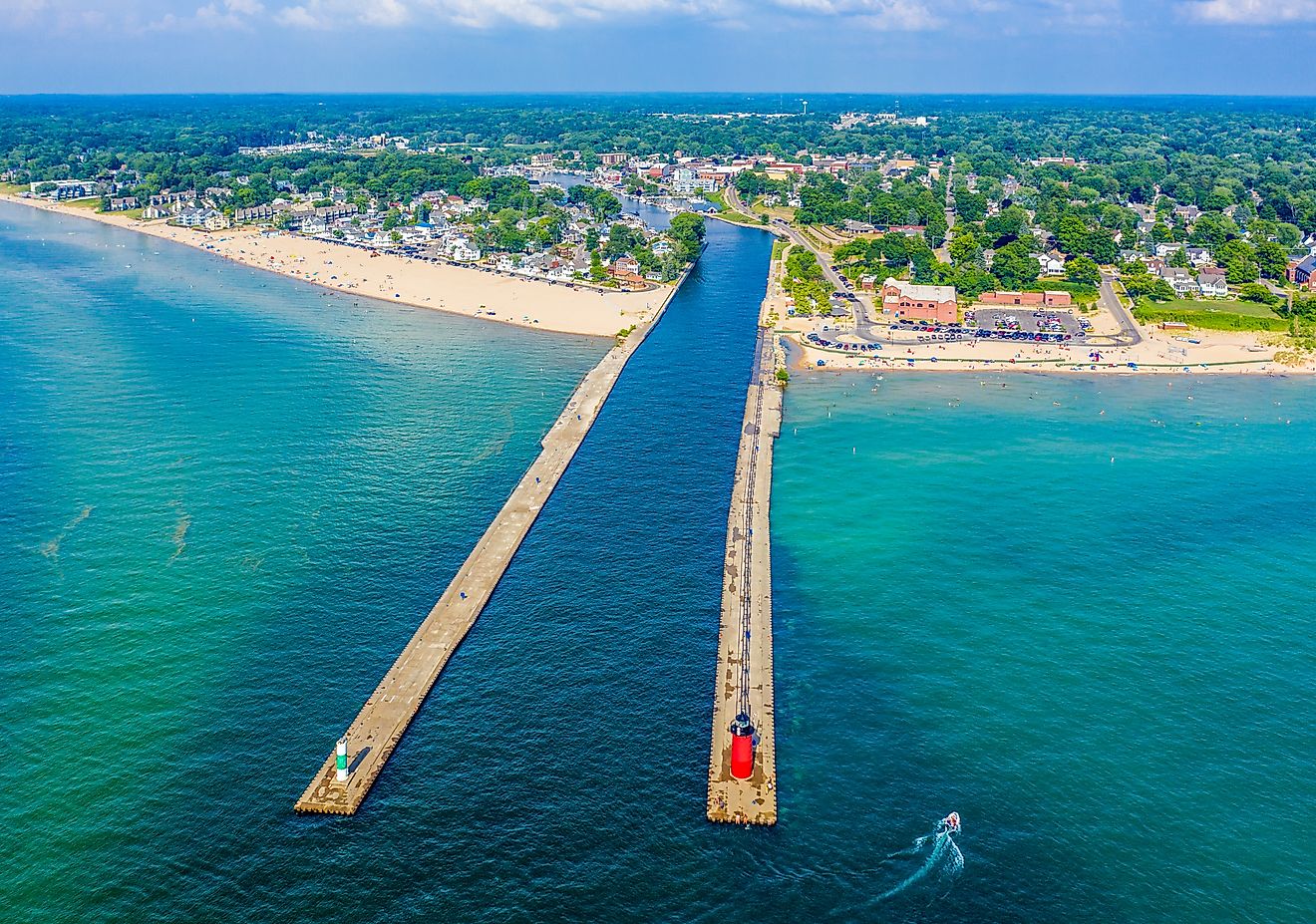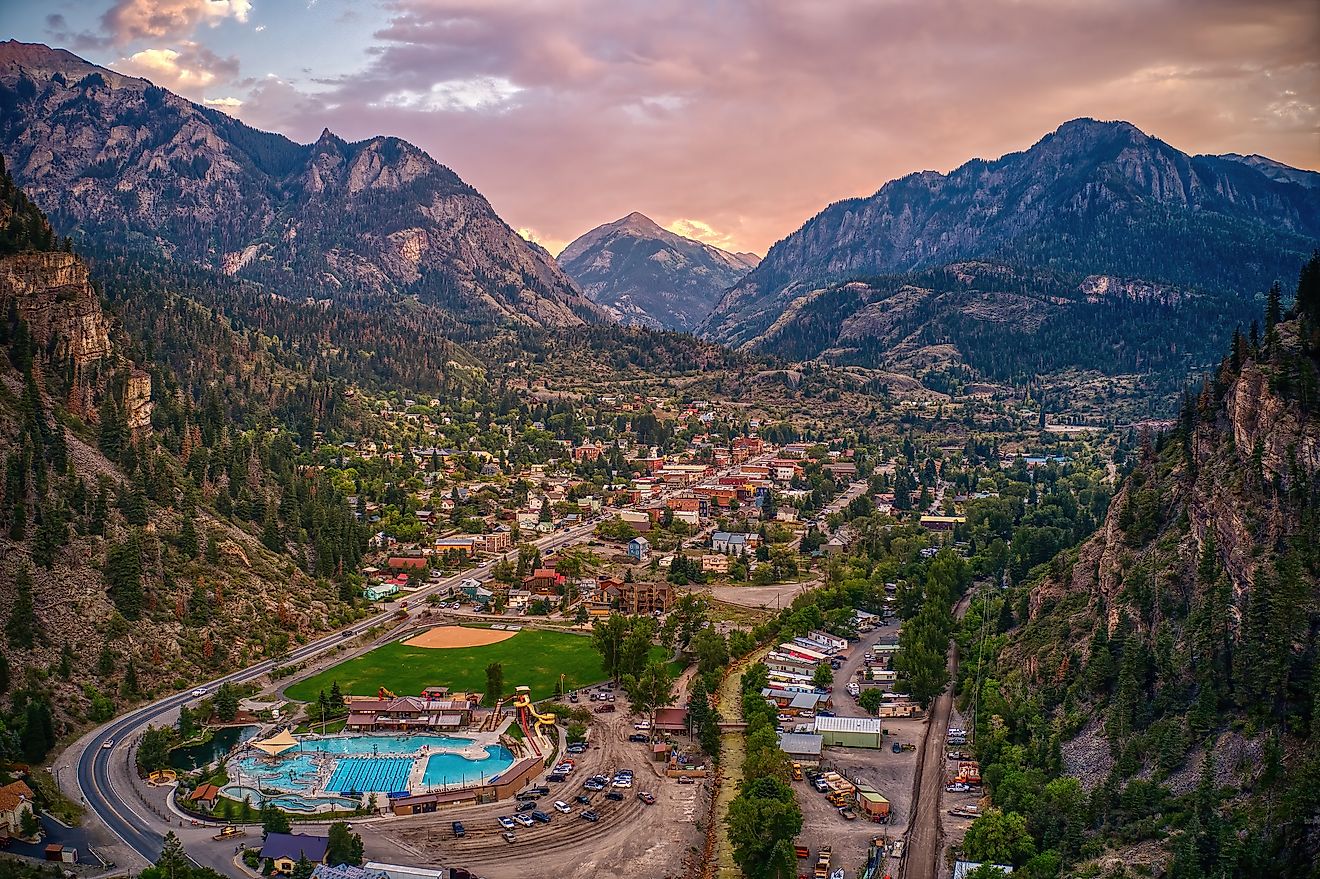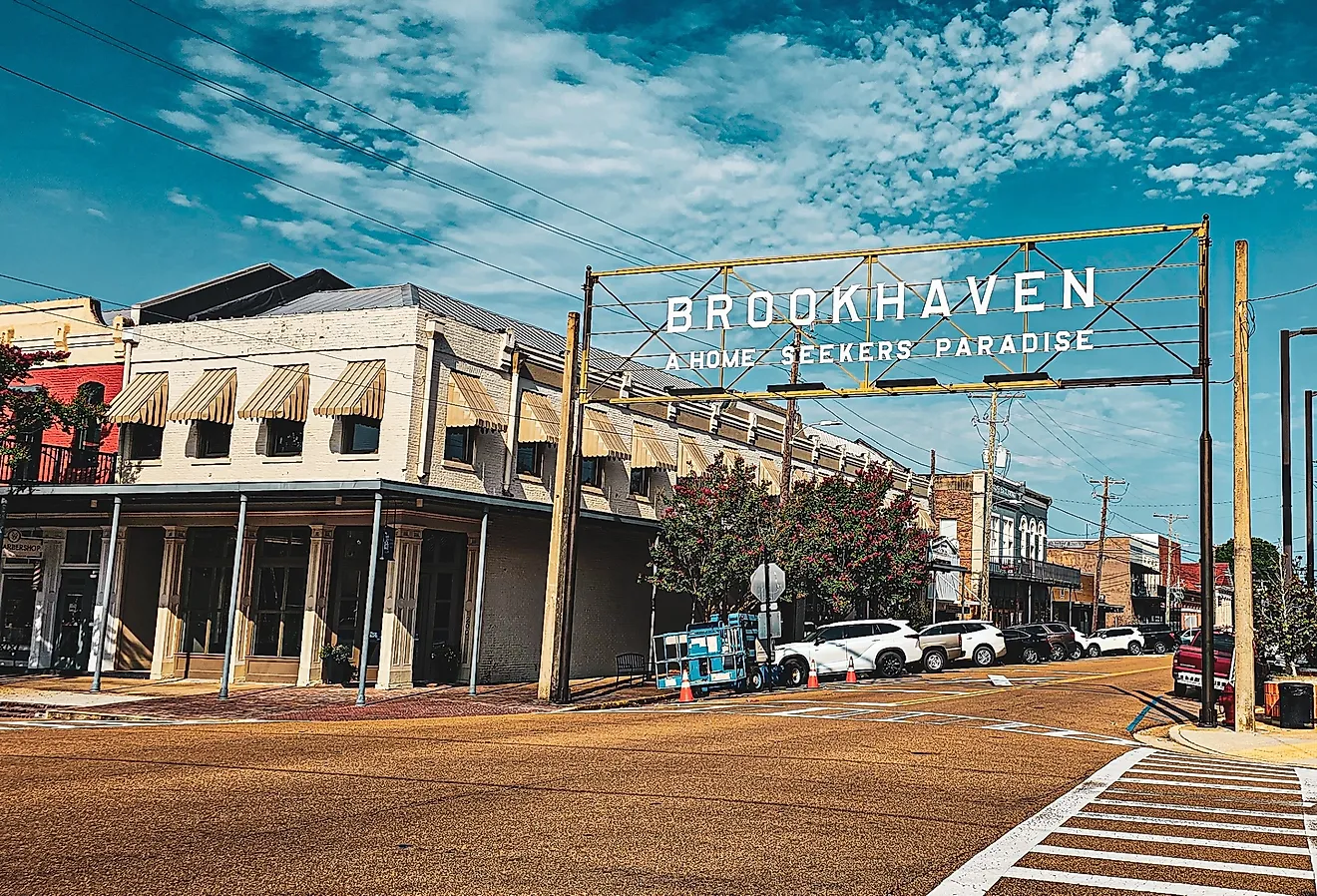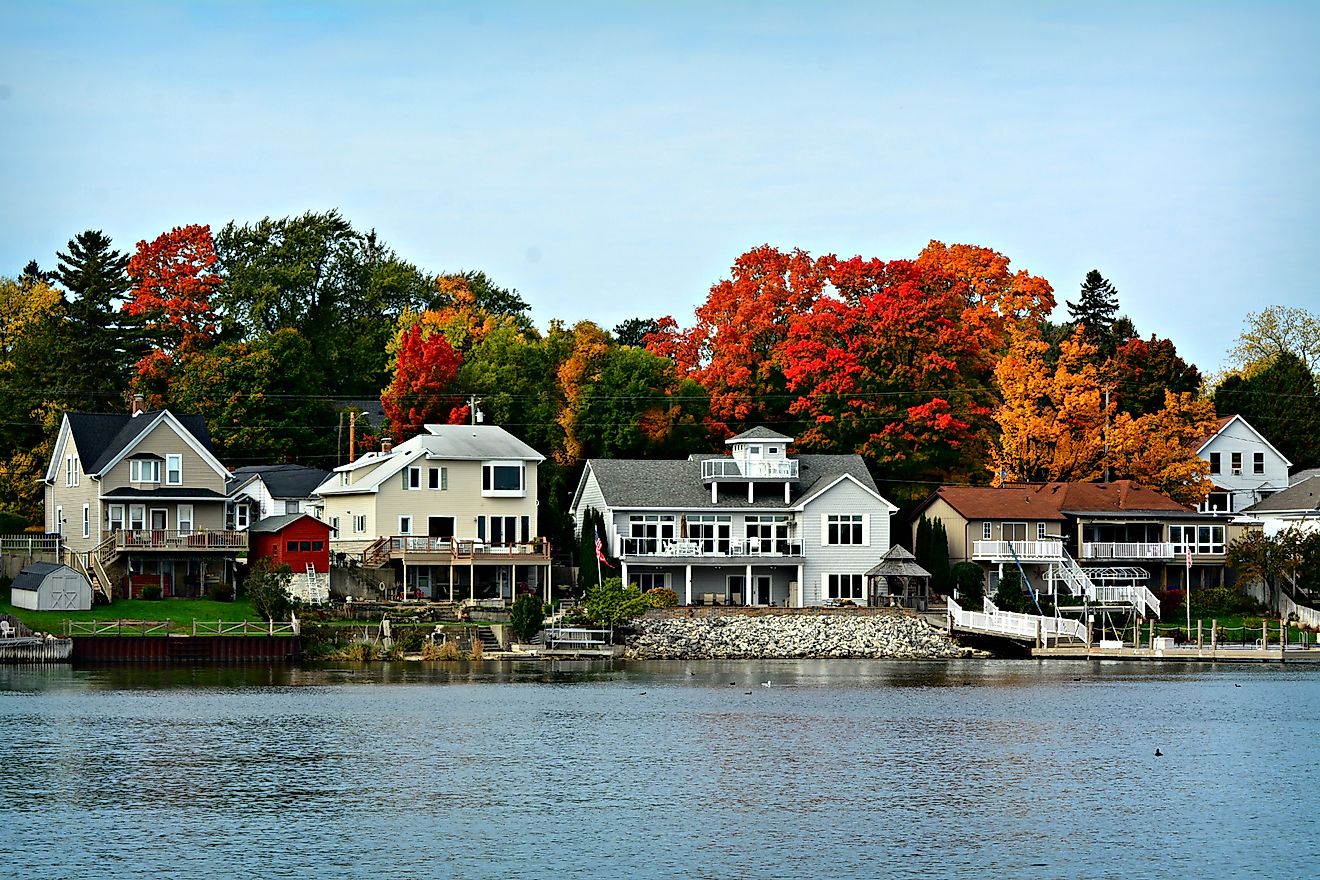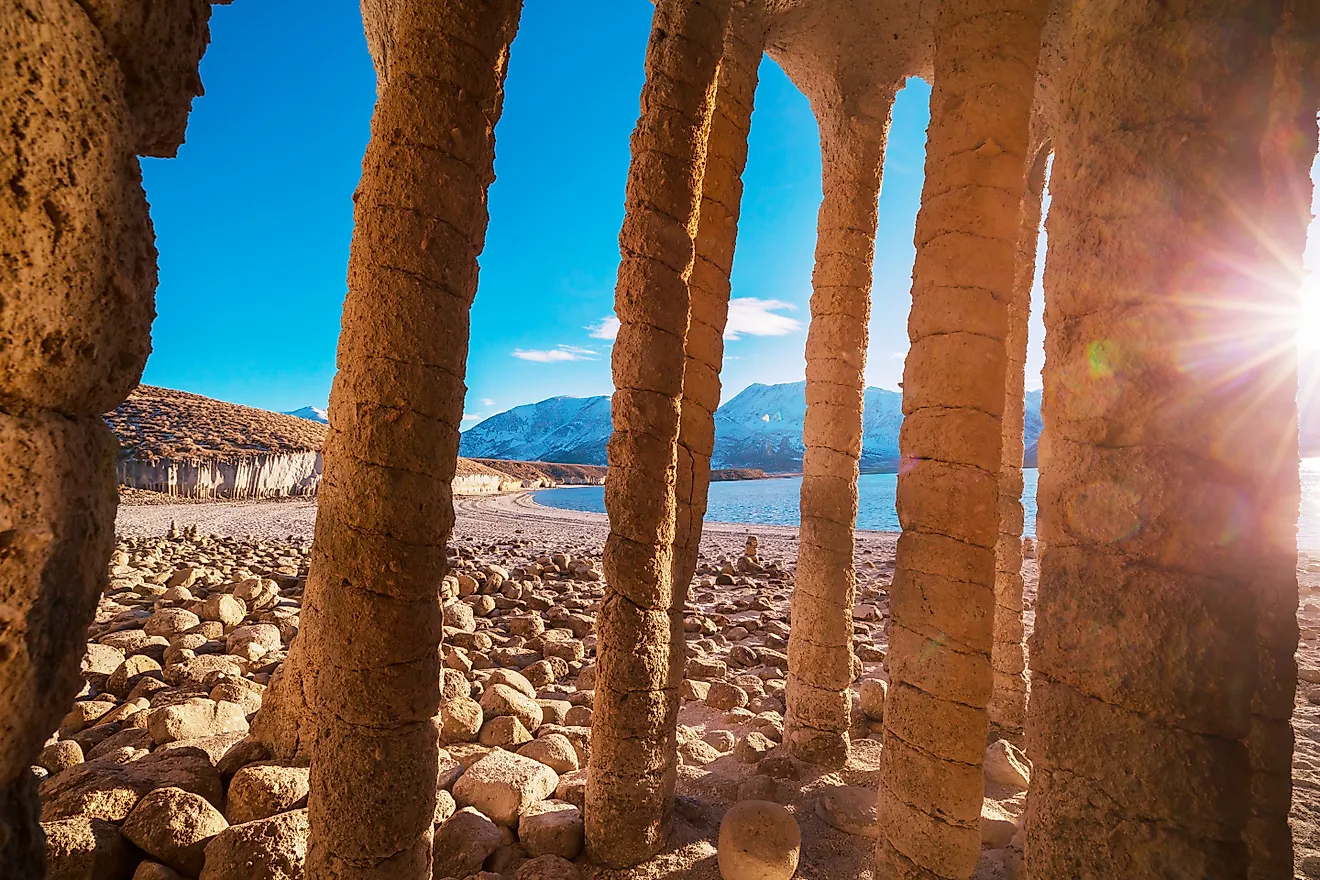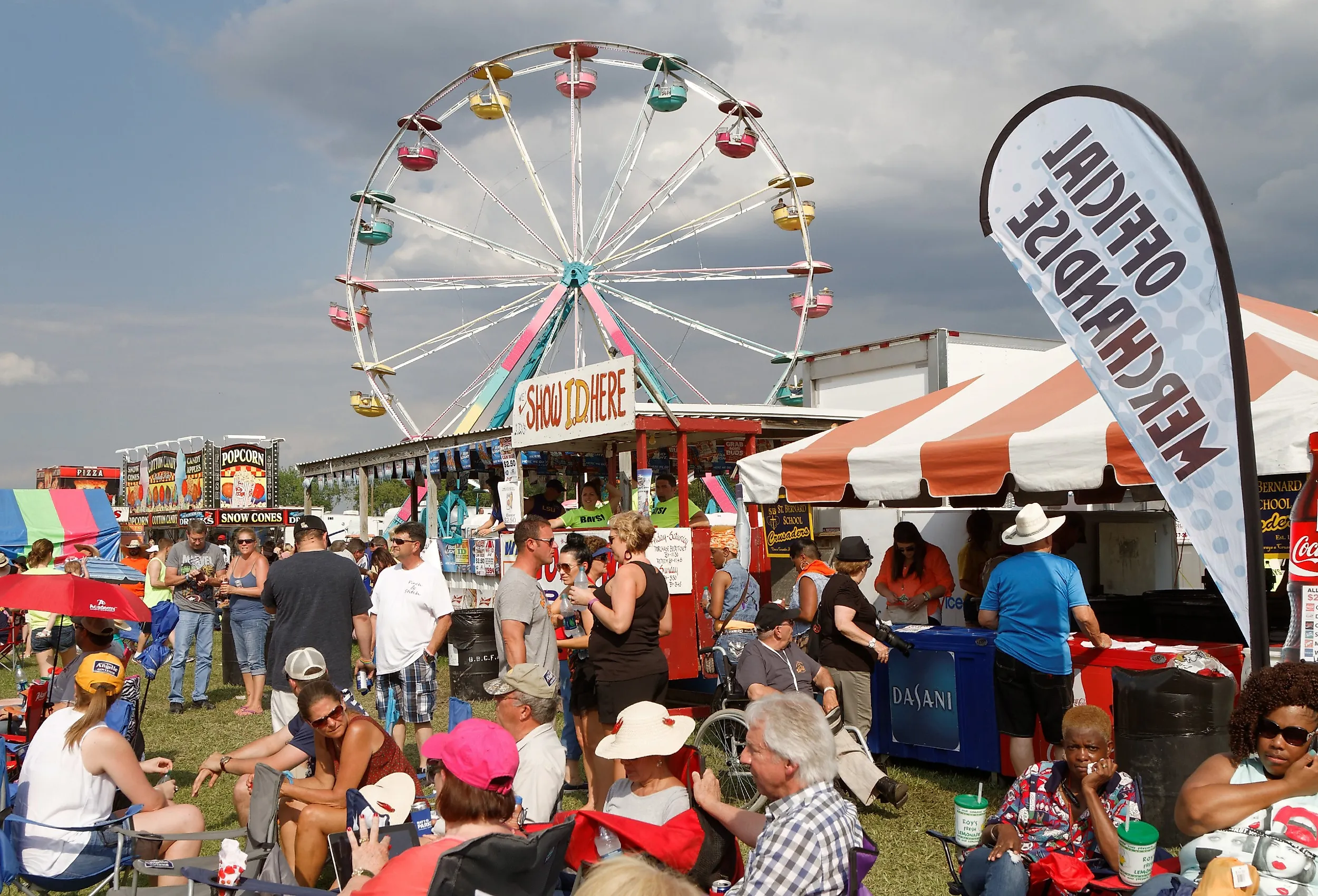
9 Overlooked Towns In Louisiana Worth Visiting
When people think of Louisiana, their minds often jump straight to New Orleans with its jazz-filled streets, Mardi Gras parades, and French Quarter charm. But beyond the Crescent City lies another Louisiana—one filled with small towns that brim with history, culture, and natural beauty. These communities may not always make the headlines, but they each promise something uniquely captivating: Cajun and Creole traditions, historic architecture, breathtaking landscapes, and warm, small-town hospitality.
From the “Crawfish Capital of the World” in Breaux Bridge to the tranquil prairies of Eunice, these towns are more than just stops on a map—they are destinations that tell Louisiana’s story in authentic and unforgettable ways. Whether it is discovering local music, savoring Cajun cuisine, or walking the banks of the Mississippi, these nine overlooked towns in Louisiana are absolutely worth visiting!
Breaux Bridge
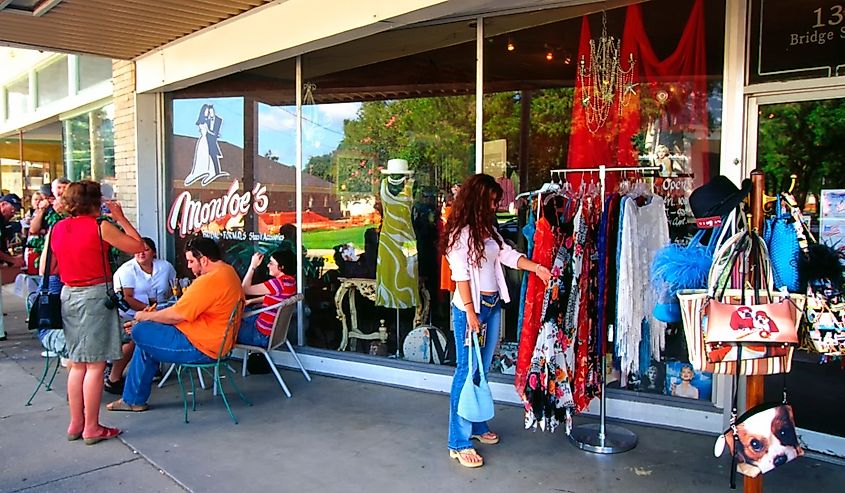
Known proudly as the “Crawfish Capital of the World,” Breaux Bridge is a unique mix of small-town customs and the Cajun and Creole lifestyles. Beyond its lively food scene, this St. Martin Parish town is known for all things fun- outdoor adventure, local history, and cultural experiences that keep travelers coming back!
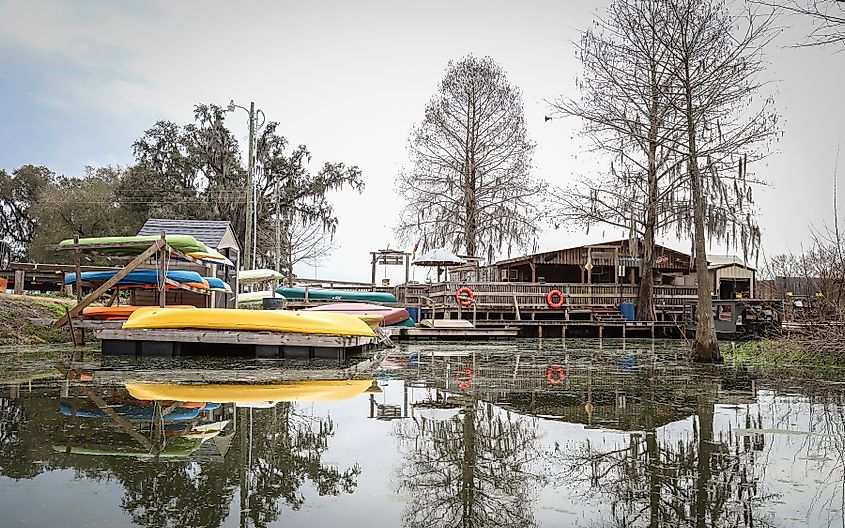
Start with a swamp tour on Lake Martin, one of the state’s most breathtaking natural areas. The lake is home to the largest wading bird rookery in the United States, and between March and August, it becomes a haven for more than 140 bird species. Gliding past cypress trees and watching the wildlife in their natural habitat is an unforgettable way to experience Louisiana’s wild beauty.
History and heritage are woven into the fabric of Breaux Bridge. At Parc des Ponts de Pont Breaux, visitors can see the striking 20-foot granite Snake Sculpture, which tells the Chitimacha legend of how Bayou Teche was formed. The nearby 1855 Bridge, the town’s original footbridge, has been transformed into a stage for cultural events and a peaceful fishing pier.
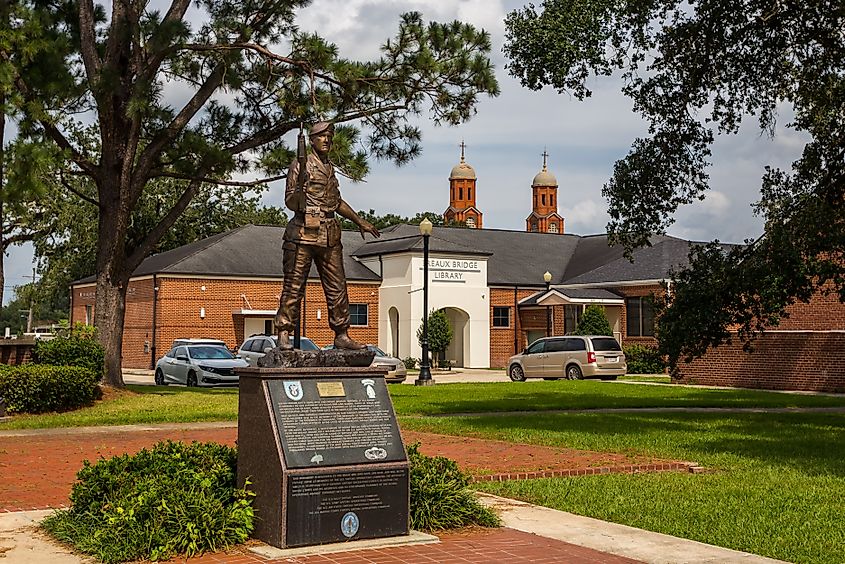
A short stroll away, Veterans Park pays tribute to the community’s history with its war memorials and a statue of Scholastique Picou Breaux, the visionary founder of the town. It’s a reflective stop that adds depth to any visit.
No trip here is complete without a taste of the town’s famous cuisine. From fresh seafood paired with live music at Randol’s to traditional Cajun fare at Jeaux Biffs, Breaux Bridge makes sure every meal celebrates its culinary heritage.
Natchitoches
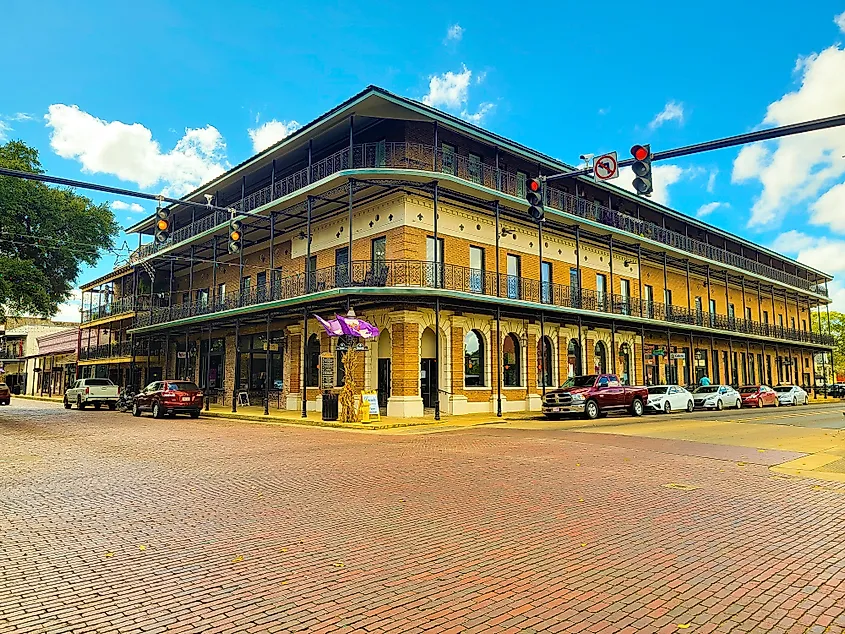
As the oldest permanent settlement in northwest Louisiana, Natchitoches (pronounced Nack-a-tish) has over 300 years of history woven into its streets and riverbanks.
A journey into the region’s past begins at the Cane River Creole National Historical Park, home to Oakland and Magnolia Plantations. These 18th-century estates are among the best-preserved Creole plantations in the country, with more than 65 historic structures surrounded by sprawling oaks.
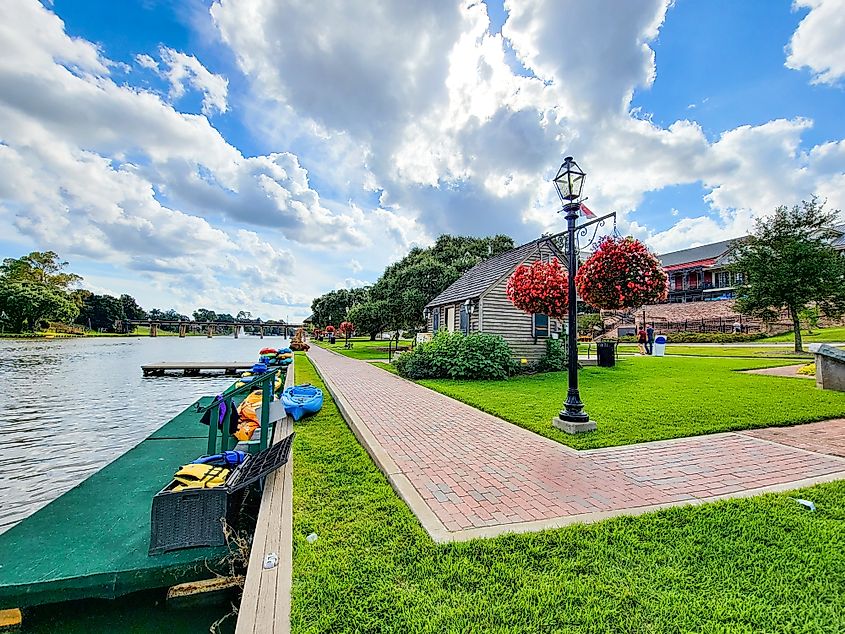
Outdoors, Natchitoches is a paradise for anglers. Visit the Cane River Lake to enjoy bass, bream, and crappie fishing beneath shady cypress trees. Black Lake is renowned for bass tournaments and prized crappie, while the mighty Red River delivers plenty of space for boating and catfish adventures. Easy access points like the Grand Ecore Recreation Area make it simple to cast a line or launch a boat.
For a different view of the landscape, explore Kisatchie National Forest—Louisiana’s only national forest—where trails like Longleaf Vista showcase sweeping views and diverse ecosystems. Closer to town, visitors can rent a kayak, canoe, or pedal boat from Cane River Paddle & Pedal Sports and drift peacefully along the waterway that defines the city.
After a day of exploring, dining comes with a view. T-Johnny’s On the River pairs hearty seafood with a heated patio overlooking Cane River Lake—the perfect way to enjoy local flavors while soaking in the scenery.
Grand Isle
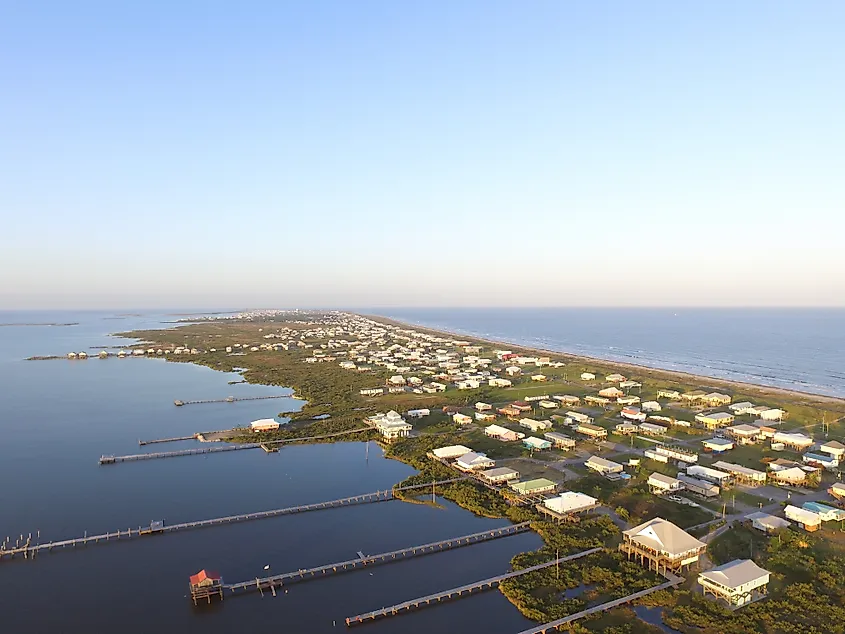
Tucked along Louisiana’s Gulf Coast, Grand Isle is a remote barrier island that feels like an oasis at the edge of the sea. Famous for its fishing, birding, and laid-back atmosphere, it presents sweeping Gulf of Mexico (Gulf of America) views, miles of shoreline, and a true taste of the state’s “Sportsman’s Paradise.”
The island’s highlight is Grand Isle State Park, where fishing often takes priority over sunbathing. The park’s fishing pier is a gathering place for locals and visitors alike, adding to the authentic coastal atmosphere.
Fishing opportunities extend far beyond the pier. With over 280 species of fish in local waters, the island is a dream for anglers. From the Old Fishing Bridge near Caminada Pass to numerous marinas and charter companies, casting a line is possible almost anywhere!
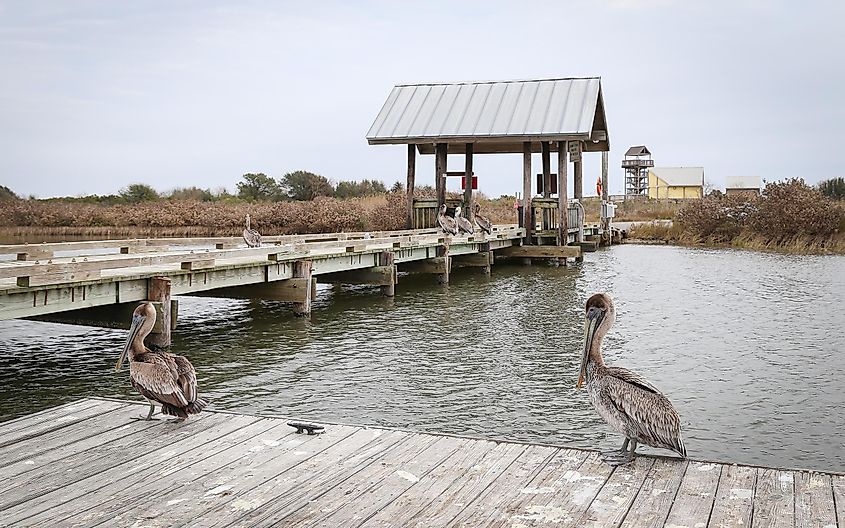
In spring, the island becomes a paradise for birdwatchers. Thousands of migratory birds pause here, flocking to the last stand of oak-hackberry forest preserved by The Nature Conservancy. Guided nature walks bring visitors into the heart of this habitat, and the Migratory Bird Festival celebrates the seasonal arrival of these feathered travelers with community pride.
Eunice
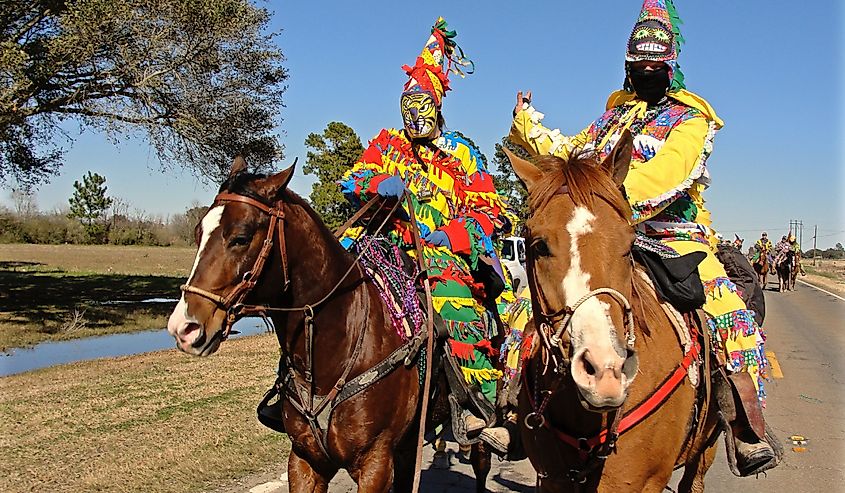
In the heart of Cajun Country, Eunice proudly carries the title of “Louisiana’s Prairie Cajun Capital.” Surrounded by rice fields, crawfish ponds, and prairies bursting with wildflowers, this small but lively city of 10,000 is devoted to preserving its heritage. With its rich amalgamation of music, history, and French culture, Eunice is one of those overlooked Louisiana towns that is truly worth visiting.
Music lovers are immediately drawn to the Savoy Music Center, a hub of Cajun sound and craftsmanship. Founded by renowned accordion maker Marc Savoy, the center sells hand-crafted instruments, recordings, and supplies, while its Saturday morning jam sessions bring together musicians from all walks of life. Whether you are playing alongside locals or just listening, it is a one-of-a-kind Louisiana experience that captures the soul of Cajun music.
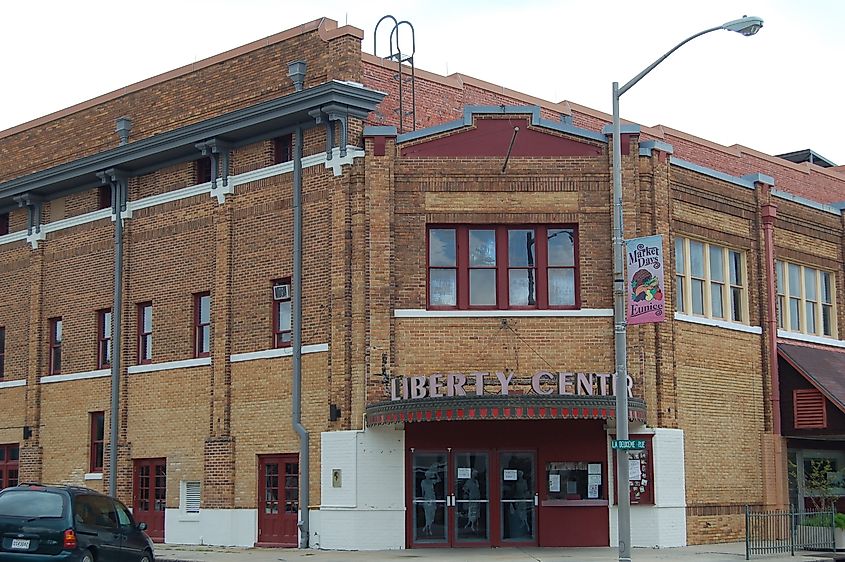
Keller House is the famed residence that remained in the Keller family for six generations; it is a must-visit for tourists in Eunice. Just steps away lies the Liberty Theatre, a cultural icon that has hosted everything, from tightrope walkers to legendary performers like Roy Rogers and Tex Ritter since its opening in 1924. Together, they highlight Eunice’s long-standing commitment to both entertainment and community.
For a deeper dive into regional heritage, the Jean Lafitte National Historical Park & Preserve and Prairie Acadian Cultural Center are a must. Its exhibits, artifacts, and weekly programs celebrate the lives of Acadians who settled Louisiana’s prairies. Cooking demonstrations, craft workshops, and live Cajun music bring the history to life, while the Country Mardi Gras Exhibit reveals the vibrant traditions that continue to shape Eunice today.
St. Francisville
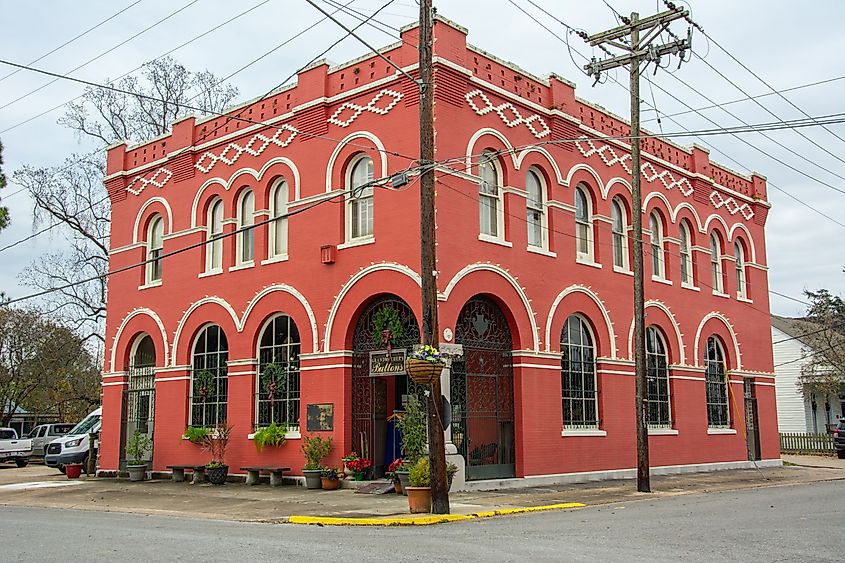
Tucked into the rolling hills of West Feliciana Parish, St. Francisville is a town known for its slower pace and scenic surroundings. It has become a beloved destination for those who want to unwind, explore, and reconnect with Louisiana’s landscapes.
The heart of town is its historic district, where tree-lined streets and preserved buildings set the stage for exploration. The West Feliciana Historical Society and Museum reveals the area’s past with exhibits ranging from the West Feliciana Railroad to local baseball legends. Rotating displays and memorabilia ensure there is always a new piece of history to discover.
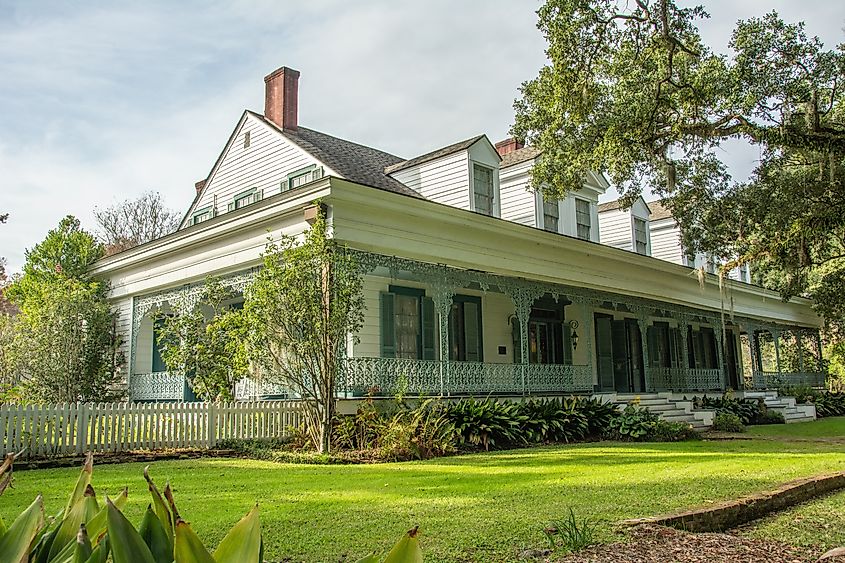
Nature lovers will find endless opportunities just outside the city limits. The Tunica Hills Wildlife Management Area showcases a side of Louisiana many don’t expect: rugged hills, waterfalls, and diverse flora and fauna. Hiking trails wind through bird-filled forests, while nearby waterways invite kayaking, and the scenic backroads are perfect for cycling. It is a haven for ecotourism and outdoor exploration.
For something truly awe-inspiring, the Cat Island National Wildlife Refuge lies only 10 miles away. Home to the largest bald cypress tree east of the Sierra Nevada—standing 96 feet tall with a 17-foot diameter—the refuge is a living reminder of nature’s grandeur. The surrounding swamps, ridges, and backwater sloughs shaped by the Mississippi River only add to its breathtaking appeal.
Back in town, Birdman Coffeehouse and Eatery is considered a cozy spot to recharge with specialty coffee, hearty toasts, and baked goods!
Abbeville
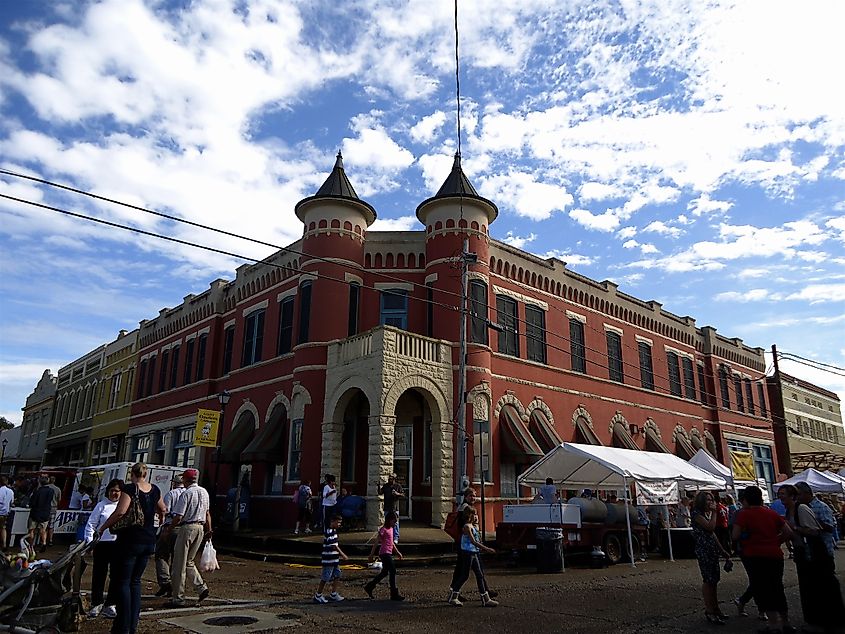
At the heart of Louisiana’s Cajun Country, Abbeville is a town where food, music, and French legacy come together in a way that feels both authentic and inviting. It is located just 30 minutes southwest of Lafayette.
Seafood lovers flock here for one reason: oysters. Abbeville is dotted with popular restaurants serving up some of the freshest catches in the region. Among them, SHUCKS! The Louisiana Seafood House has become a favorite since 1995, celebrated for recipes passed down through generations and for capturing the true spirit of Cajun cuisine.
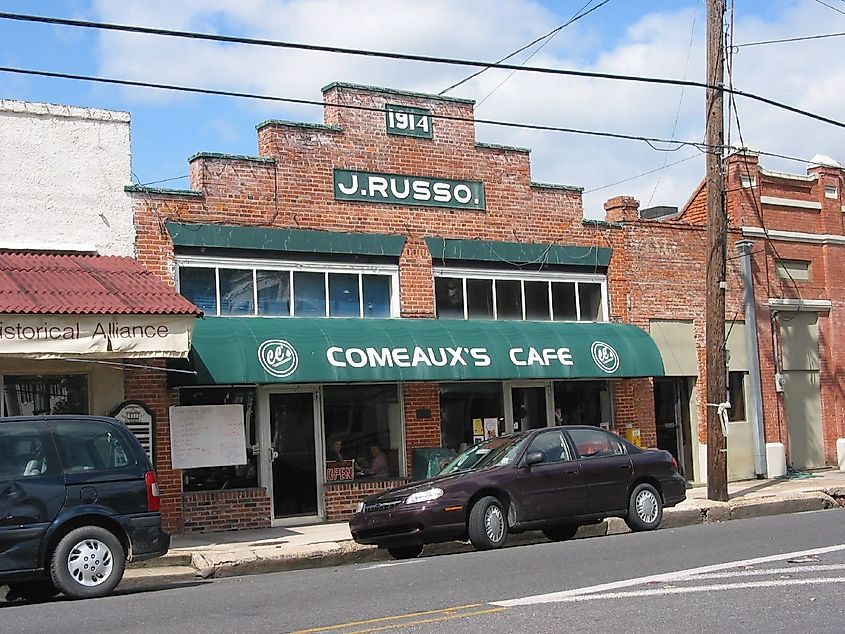
The town’s French roots trace back to its founder, Catholic missionary Père Antoine Désiré Mégret, who named Abbeville after his hometown in France. Today, those roots shine through in both its culinary traditions and its community events. The most famous is the Giant Omelette Celebration, where chefs prepare a massive 5,000-egg omelet in the town square. Inspired by a Napoleonic legend, the festival has grown into a worldwide tradition that brings people together through food, friendship, and cultural exchange.
Visitors will also enjoy Abbeville’s iconic downtown, beautifully restored under the Louisiana Main Street program. Strolling past shops, cafés, and historic buildings gives visitors a glimpse into the town’s proud heritage while showcasing its vibrant present. For an overnight stay, the Caldwell House provides a charming retreat near downtown. With fully furnished rooms, cozy porches, and classic Southern hospitality, it is the perfect base for exploring the area.
Donaldsonville
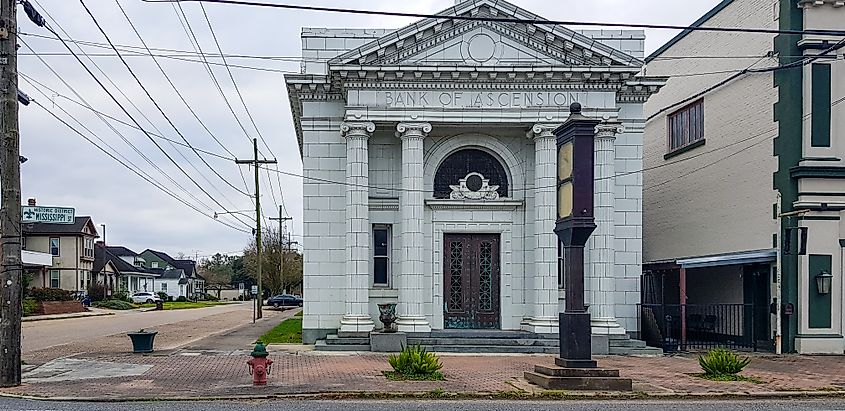
Set along the Mississippi River, Donaldsonville is a town known for its well-kept antebellum homes, vibrant downtown, and heritage landmarks. Once serving briefly as Louisiana’s capital in the 19th century, Donaldsonville continues to be a destination worth visiting for its beauty, architecture, and community spirit.
Historic treasures are everywhere. The Ascension Parish Courthouse, which housed Louisiana’s state government in 1830, remains a reminder of the city’s political importance. Nearby, the elegant River Road Plantations showcase graceful architecture and tell the layered story of life along the Mississippi.
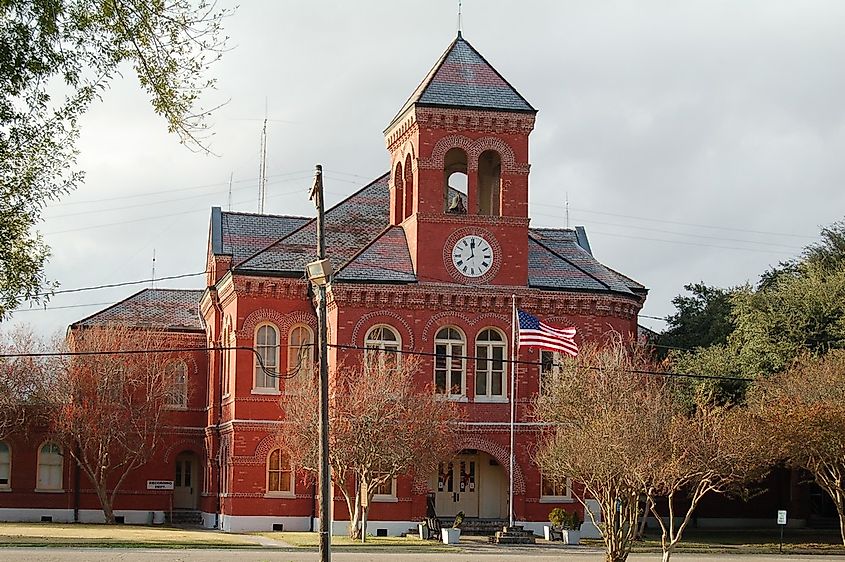
For a quieter moment, experience breathtaking views of the river from Crescent Park. Visitors can stroll the pathways, enjoy a picnic, or simply watch the boats drift past on the mighty Mississippi. It is both a peaceful retreat and a perfect starting point for exploring the town’s historic heart.
Spiritual history shines at Ascension Catholic Church, a Gothic Revival masterpiece dating to the 1800s. Its soaring spire, stained-glass windows, and serene interior reflect the deep faith of the community while adding to Donaldsonville’s architectural beauty.
The town also embraces its agricultural roots at the Farmers Market, where stalls overflow with fresh produce, local crafts, and homemade delicacies. Meeting the vendors and sampling farm-to-table flavors is as much a cultural experience as it is a culinary one, capturing the warmth and hospitality of Donaldsonville’s people.
Covington
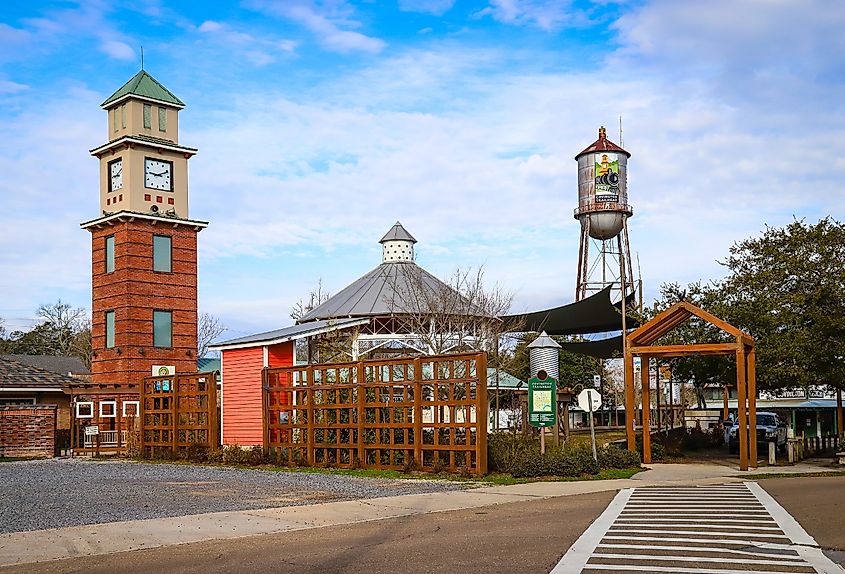
Just 40 miles north of New Orleans, across the legendary Lake Pontchartrain Causeway—the longest continuous over-water bridge in the United States—lies Covington, a small town with a big personality. Set where Louisiana’s cultures meet, Covington blends the French-Catholic traditions of the south with the pine-covered hills and Anglo-Protestant influences of the north. The result is a town full of contrasts, charm, and experiences that make it truly worth visiting.
Outdoor enthusiasts will find plenty to love at Fontainebleau State Park, a 2,800-acre haven along the shores of Lake Pontchartrain. Sailboats often dot the horizon, and the park’s sandy beach is a favorite for sunbathers. Active travelers must explore the converted rail line known as the Tammany Trace. It is home to miles of scenic trails perfect for cycling, walking, or even in-line skating. Visitors can end the day camping under the stars or unwinding in rustic cabins overlooking the lake.
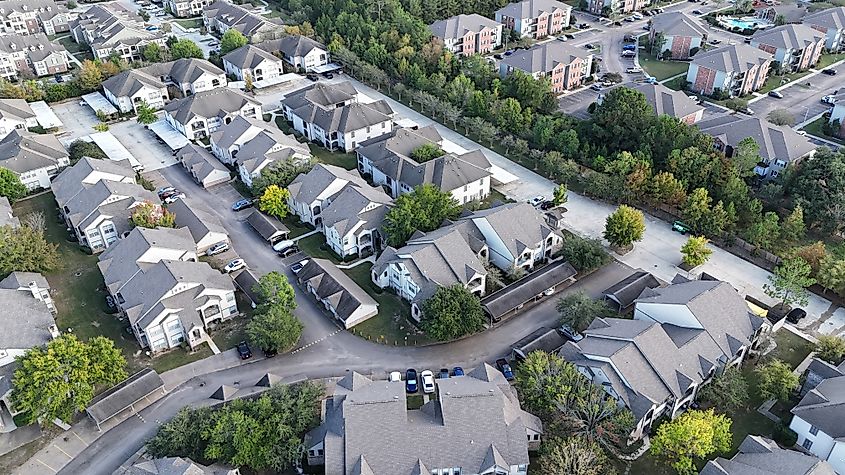
Back in town, Covington’s food scene reflects both health-conscious trends and Louisiana flavor. Locals swear by Coffee Rani, a café that has long embraced farm-to-table dining. Known for fresh salads, grilled sandwiches, and hearty pastas, it also offers vegetarian-friendly options and a Sunday brunch that has become something of an institution. Ingredients are sourced locally, including organic eggs from nearby Abita Springs, ensuring every dish is both wholesome and delicious.
Adding a unique cultural twist, The Icons Museum—founded in 2019—is the only artist-created museum in the world dedicated entirely to modern icons of art, music, and culture. Visitors can admire more than 60 original portraits and step into interactive RetroRooms for an experience combining creativity, nostalgia, and innovation.
New Roads
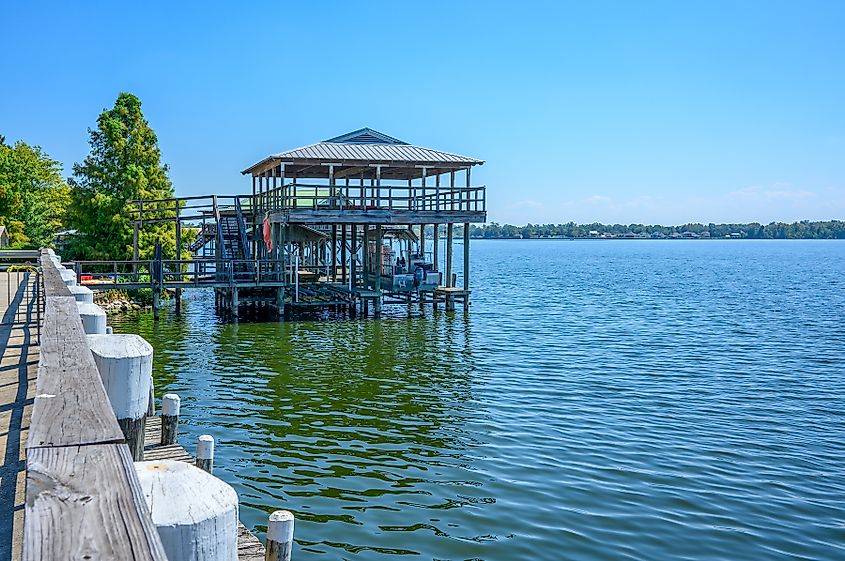
Perched on the banks of False River, New Roads is one of Louisiana’s oldest settlements. Known as the “Little Carnival Capital” of Louisiana, this riverside town has been celebrating Mardi Gras since 1881—making it one of the state’s earliest places to embrace the tradition.
The town’s roots are showcased at the Pointe Coupée Parish Museum, a rare example of log cabin-style construction adapted into Creole architecture. Built in the early 19th century, the home is filled with period furnishings and exhibits on local architecture, offering a glimpse into Louisiana’s early frontier life.
Downtown, New Roads Main Street captures the heart of the community. Lined with historic buildings, boutique shops, and fine dining, it sits alongside False River, an oxbow lake once part of the Mississippi River. Today, the lake serves as a hub for fishing, boating, and water sports, making the town equally appealing for outdoor recreation as it is for cultural exploration.
For nearly a century, Morel’s Restaurant and Courtyard Inn has been a cornerstone of New Roads hospitality. Guests can stay in one of 12 charming rooms overlooking the water, then dine at the restaurant while enjoying spectacular views of False River’s sunrises and sunsets. It is a classic Louisiana experience where tradition and comfort meet.
The town also treasures its artistic side at the Julien Poydras Museum and Arts Center, housed in a former high school dating back to 1924. Restored and preserved as a community hub, the venue now hosts concerts, films, art exhibitions, and history displays in its 200-seat auditorium.
It is safe to say that each of these nine destinations offers its own reason to visit: world-class fishing on Grand Isle, the historic plantations of Natchitoches, the artistic flair of Covington, or the Cajun rhythms of Eunice. Collectively, they reveal a side of Louisiana that is rich, diverse, and deeply rooted in tradition.
For those looking to go beyond the familiar, these small towns provide an opportunity to slow down, savor authentic experiences, and see Louisiana from a fresh perspective. They are places where festivals, food, music, and old tales weave into everyday life—and where visitors are welcomed like family. In short, these nine overlooked towns prove that the true soul of Louisiana is found not just in its famous cities, but in the hidden corners that are absolutely worth visiting.
